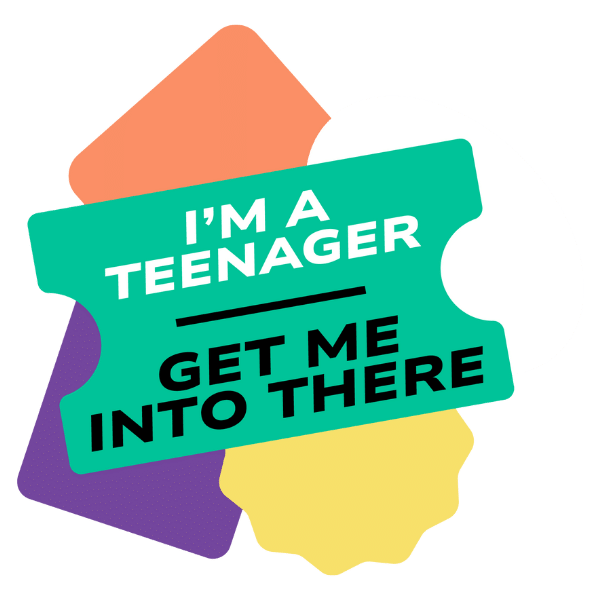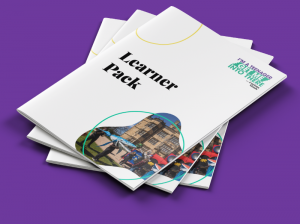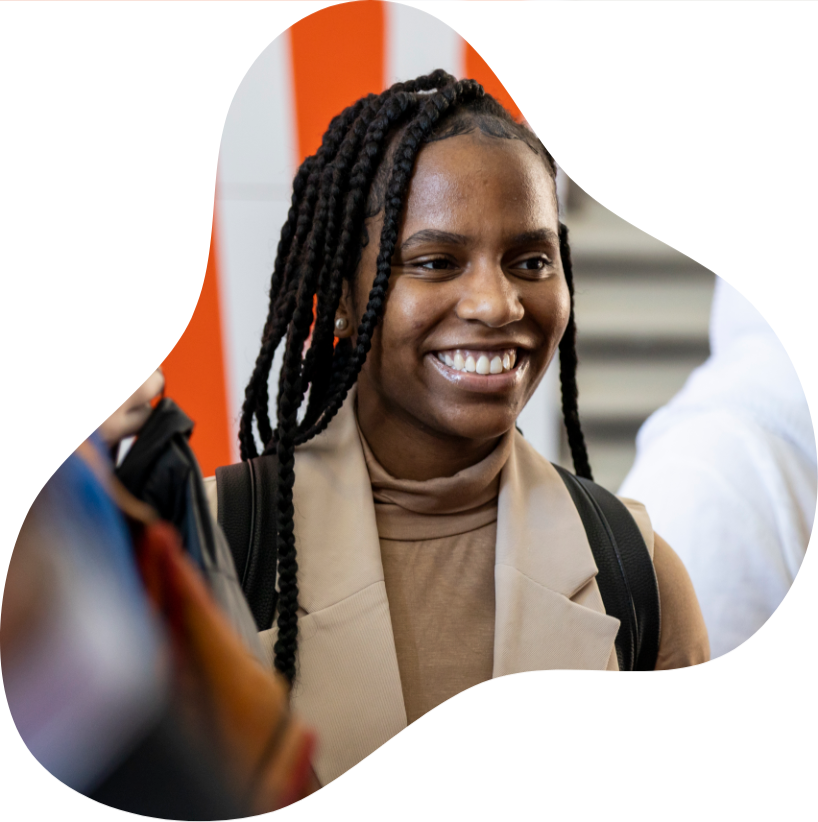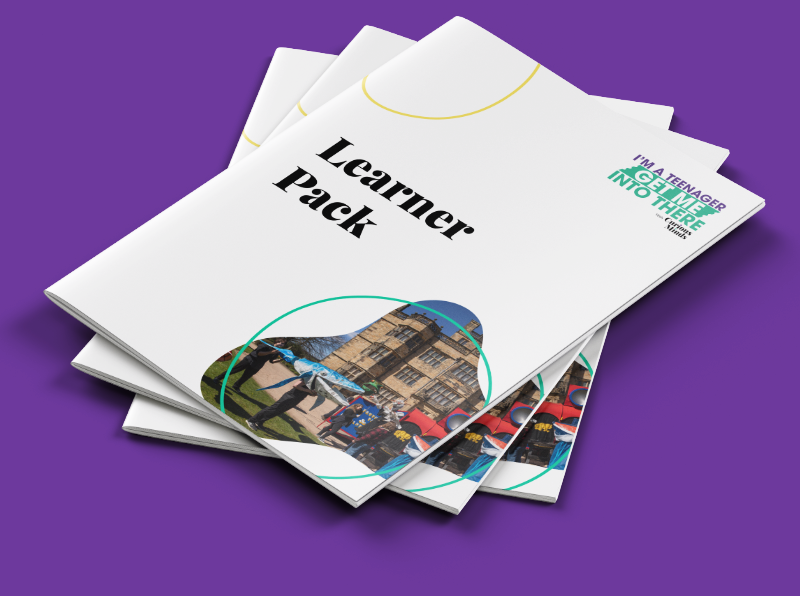
The Teenage Brain
This module will give you a basic understanding of how the human brain develops (don’t worry, you don’t need a science degree!) which will help you understand how teenagers experience your venue. This can help us understand teenage behaviour and why it is particularly important to welcome and engage with young people.
As discussed in module 1 stereotypes of teenagers being aggressive, fragile, risk taking and self-conscious can be damaging. Our preconceptions affect our behaviour towards young people in our venues. However, there is an element of truth to some (not all!) teenagers being more likely to behave in an unpredictable and sometimes challenging way. An understanding of how the human brain develops can help us understand why this is and why we should try to empathise with these behaviours rather than clash with them.
Young people are still shaping their view of the world and what it has to offer and their brains are rewiring to form patterns which can influence them far into adulthood. This presents a unique opportunity when teenagers visit your venue independently for the first time, as a positive experience has real potential to result in a lifelong interest.
Aims

1.
Understand the basic development of the human brain

2.
Consider how teenage brain development affects behaviour

3.
Think about how this influences young people’s engagement with cultural venues
Activity 1
When was the first time you went to a cultural or heritage venue independently (not on a school trip or being taken there by someone older than you)?
Draw a quick sketch or write a short description of what you remember about the visit.
- Where did you go?
- Why did you go there?
- What did you see?
- What did you see, hear, smell or feel?
- Do you remember any interactions with staff?
- Did you feel welcome, comfortable and safe, or uncertain, self-conscious or nervous – or a mixture?
What observations have you made of young people in your venue?
- Have you ever noticed them being particularly quiet or cautious?
- Or loud and energetic?
- Have they ever been confrontational?
- If they are in a group, do they behave in any ways that are noticeably different from older groups?
Get your Learners Pack here

Activity 2
Understanding how the human brain works and develops can help us understand why teenagers might behave in a different way to others, especially in a place they haven’t been to before. At any age, going to a new place for the first time can lead to feelings of nervousness and uncertainty, especially if you have never been to somewhere like it before. Module 3, on written and unwritten rules, explores this further, showing how visiting a venue can be more challenging if the rules and expectations are unclear.
Teenagers, who are exploring the world independently for the first time, are constantly being faced by new experiences. Through these, they are shaping their opinions about the world. This influences the development of parts of their brain which determine what kind of adult they will become, and will play a big role in the choices they make in the future.
Oldham Theatre Workshop have created this film to illustrate how the three main parts of the human brain work, and what kind of behaviours they are linked to.

Once you have watched this video, think about the examples you gave in the previous exercise.
- What part of the brain may have influenced your own teenage experience?
- Or the behaviour of the young people you observed, in each scenario?
- Why might the young people have felt and behaved in a way that was different to what we might expect from older people?
Activity 3
Now you have heard from young people about how the brain develops, this exercise will help you remember the three parts of the brain and what each part does.
Can you match the three key areas of the brain with their locations on the image below?
Reptilian Brain
(Brain stem)
Mammalian Brain
(Limbic system)
Human Brain
(Neocortex, including prefrontal cortex)

Human Brain
(Neocortex, including prefrontal cortex)
- Language development
- Imagination
- Reasoning and forward planning
- Empathy
- Managing impulses
Mammalian Brain
(Limbic system)
- Feelings and emotions
- Long-term memory
- Mood
- Learning from past experiences
Amygdala
(Lizard brain)
- The oldest part of the brain
- Survival brain
- F’s (food fight flight)
- Alarm
- Fear pleasure, anxiety, anger
Reptilian Brain
(Brain stem)
- Survival instinct
- Fight or flight
- Automatic response
- Basic functions (e.g. breathing, heart rate, object tracking)
Activity 4
By the time children become teenagers and begin to live increasingly independent lives, their mammalian and reptilian brains are developed, but the human brain, and in particular the prefrontal cortex, is still developing and continues to be shaped into their 20s.
This means that the part of the brain which influences how young people make decisions based on empathy, understanding consequences and long-term planning is still growing. Because of this, when teenagers are in a situation where they feel uncertain or unwelcome, they are more likely to be influenced by their mammalian or reptilian brain. This explains why they might react with emotions or mood or revert to their survival instincts. This can sometimes lead to situations of conflict, discomfort or just deciding to leave somewhere they don’t feel totally comfortable!

Additionally, teenagers are more sensitive to stress during adolescence. The amygdala, situated in the limbic system, or mammalian brain, is the center for emotional response. Young people are more likely to experience an ‘amygdala hijack’, when they are suddenly and overwhelmingly overcome with an emotional response to a situation. This can lead to a surge of anger or fear that could lead to a ‘fight or flight’ outcome or can lead to immense joy or laughter.
Teenagers process much more through their emotions, meaning that can impact for a lifetime. This is the most passionate and creative point in people’s lives and young people often have an acute sense of fairness. Cultural and heritage organisations that make more effort to build connections with young people find that they bring a huge amount of energy, insight and the ability to spot and challenge injustice. It is also the perfect time to make a connection that can grow into a lifelong relationship.
Neuroscientist Sarah-Jayne Blakemore’s research illustrates how the prefrontal cortex develops in teenagers, and how this can affect behaviour, such as risk-taking and self consciousness. Watch the video below for a better understanding of how this works and why it might affect how young visitors experience your venue.
Imagine you have a colleague who thinks having more young visitors would be a bad thing. They might have past negative experiences of young people behaving in a challenging way and think that encouraging more young people to come would lead to more conflict situations.
- How could you use what you have learned in this module to explain to them why young people’s behaviour can sometimes be unpredictable or challenging?
- How could you help them empathise with how young people experience your venue for the first time, especially if they’ve never been somewhere like this independently before?
- Why might it be particularly important and impactful to make sure young people have a positive experience if their prefrontal cortex is still developing?
- What would you encourage your colleague to do next time they see a new young person or group of young people come into your venue?
Make some notes about what you would say to this colleague – and if you do have a colleague who fits this description consider having this conversation with them!

Get your Learners Pack here
Key Learning
In this module, we have explored how an understanding of human brain development can help us make young people feel more comfortable and welcome.
In the human brain, the prefrontal cortex is still being developed into adulthood
This means that teenagers sometimes are more likely to have behaviour driven by emotions or instinct than by empathy or thinking through consequences to their actions
This can occasionally explain how challenging situations involving young people can develop into conflict, or make young people decide to suddenly leave your venue
It also means that a positive experience in your venue can have a greater impact on young people – as their brains are being shaped by their first independent experiences, discovering they like something or somewhere can lead to a lifelong passion or career choices!
For these reasons, it is particularly important to welcome and engage young visitors – you could be nurturing your future audience, collaborators or colleagues – or putting someone off for life if they have a bad experience.
In your learning journal please reflect on what you have learnt today and how you could put this into action in your venue.

Get your Learners Pack here
And Finally
How are you going to share your learning with your colleagues? Your visitors?
Did you have any lightbulb moments?
Write down one small thing you are going to do as a result of this module
Write one bigger thing you are going to do as a result of this module
Further reading
Sarah-Jayne Blakemore on understanding teenage brain development: